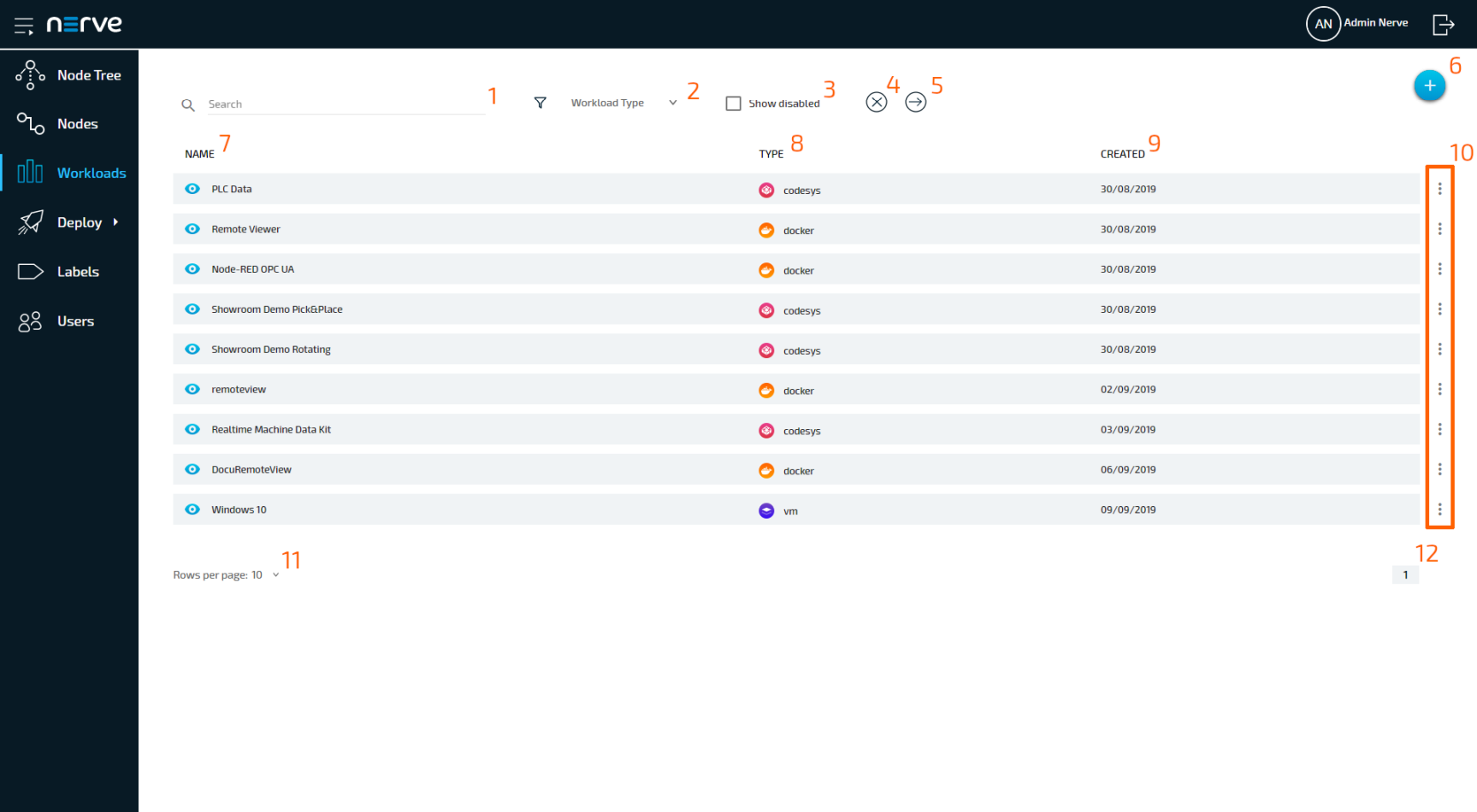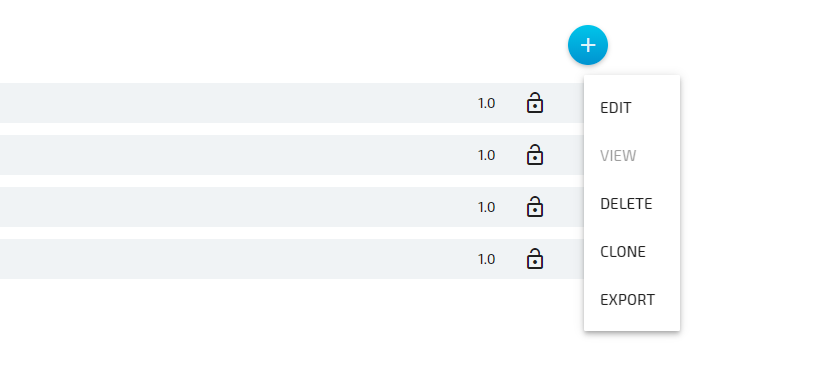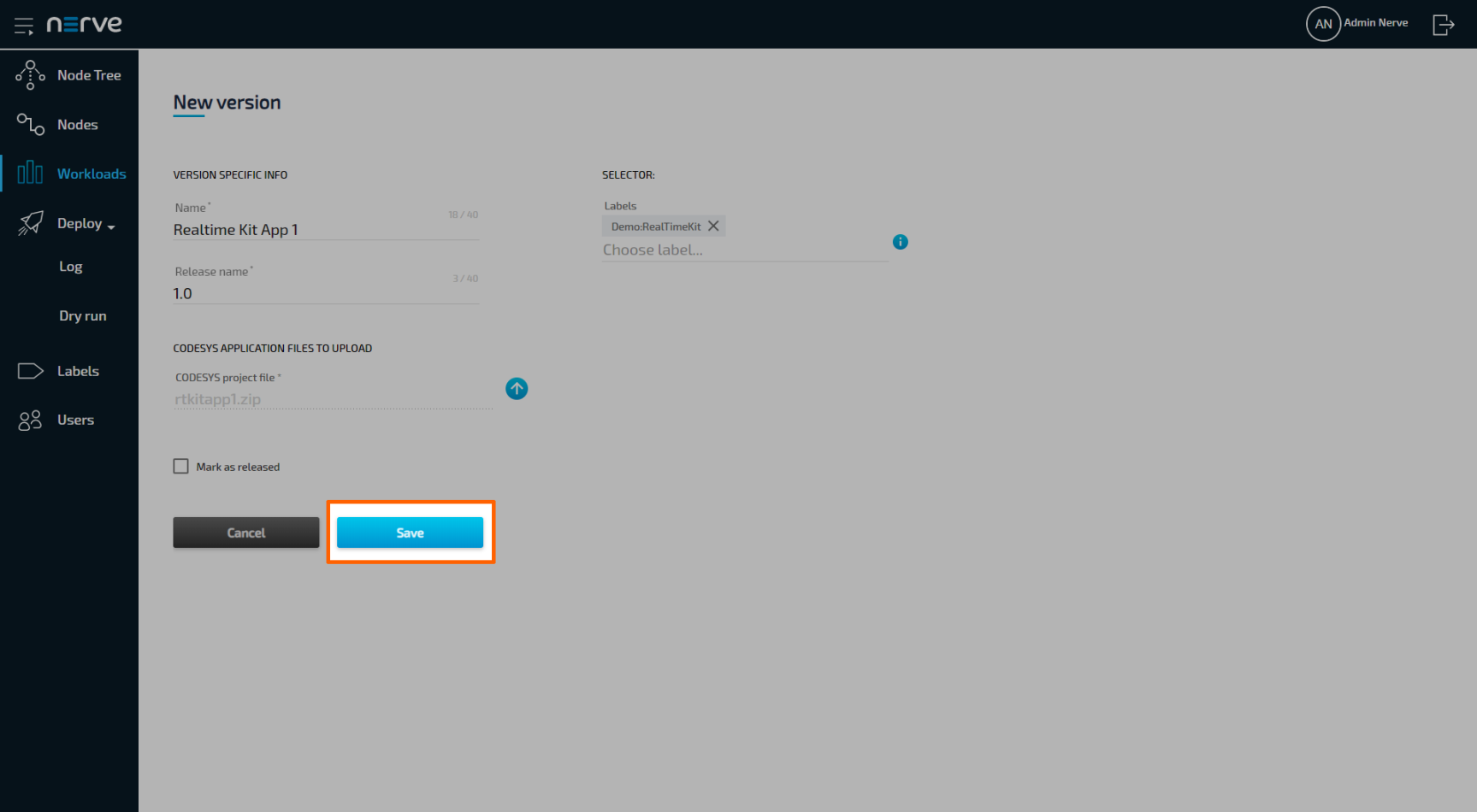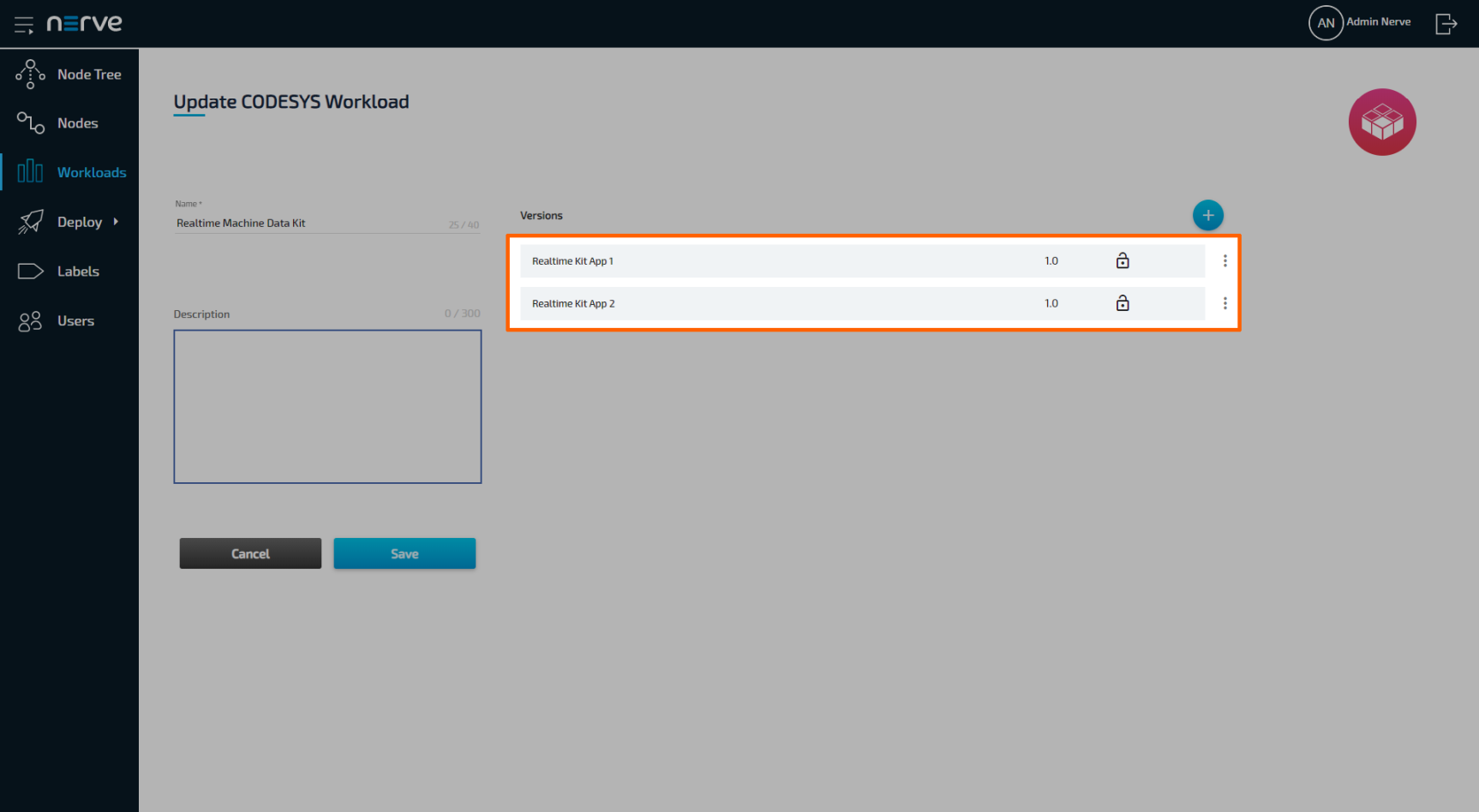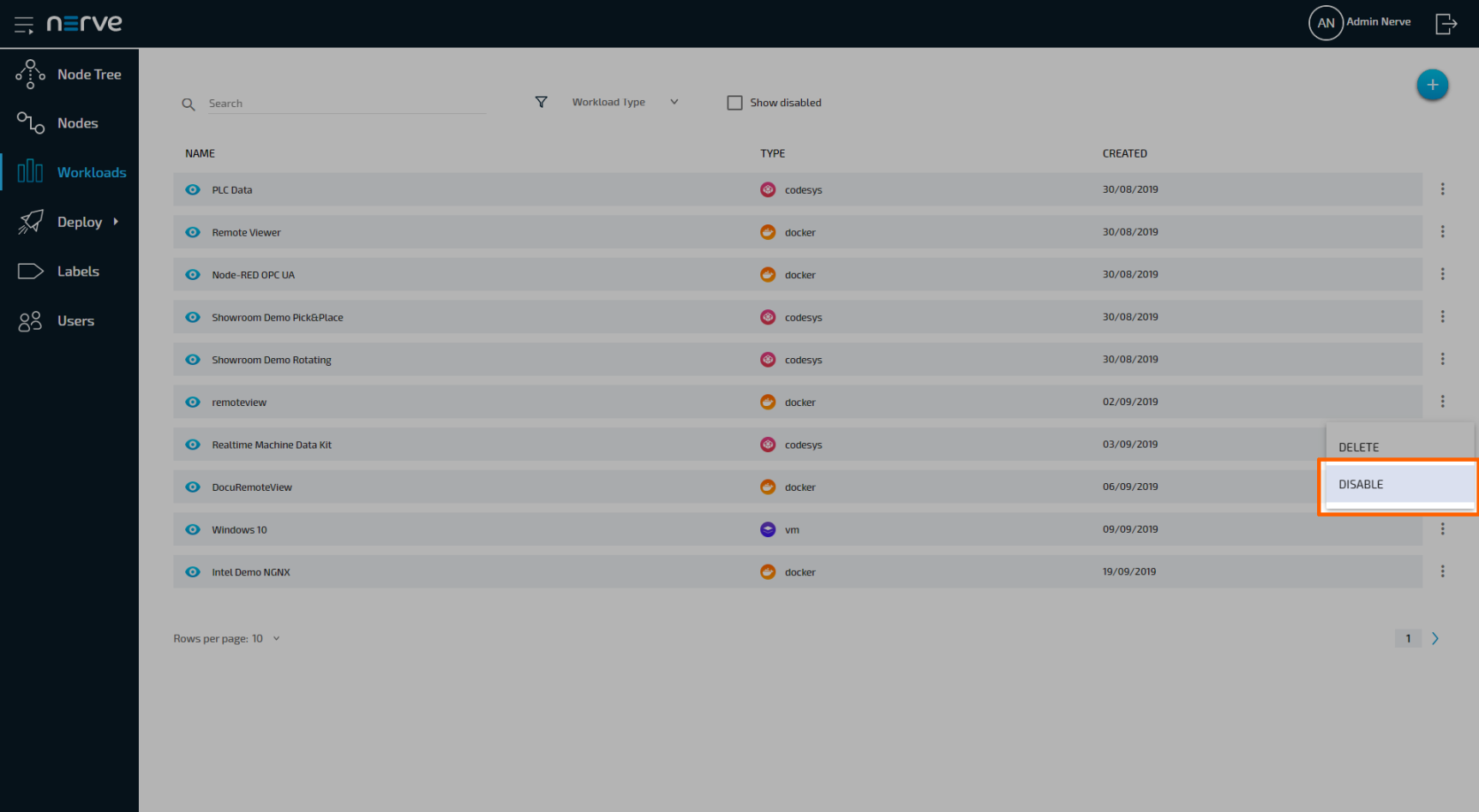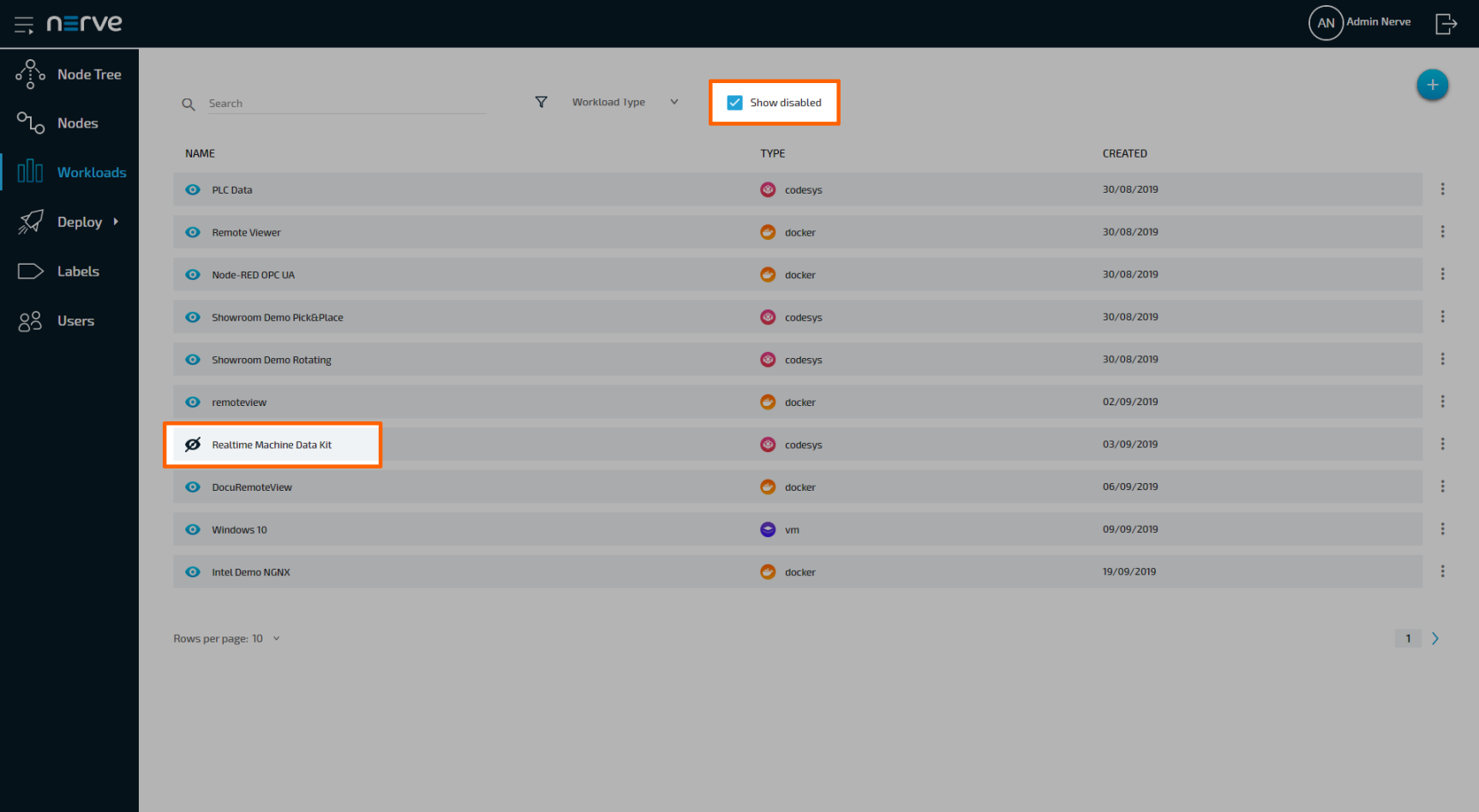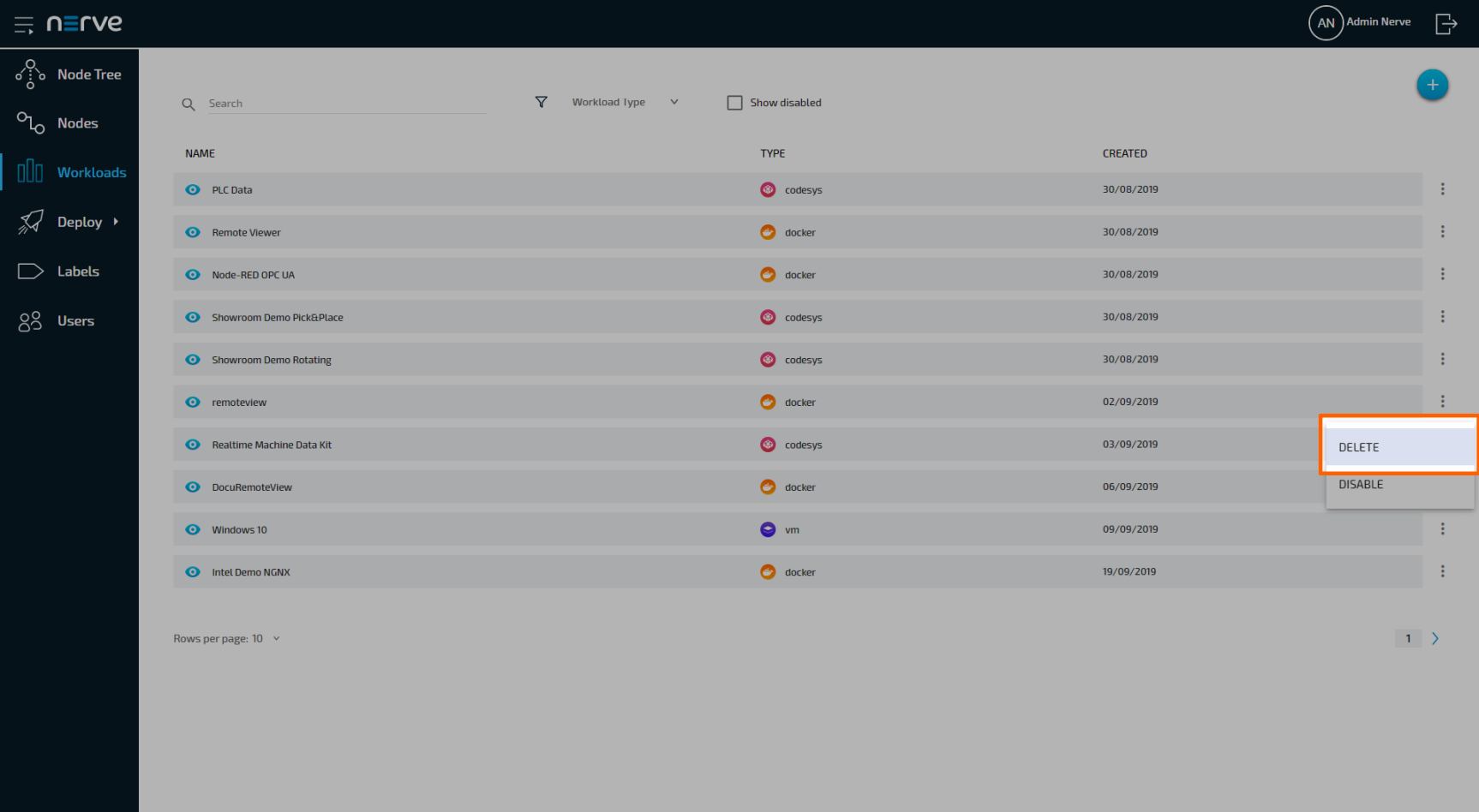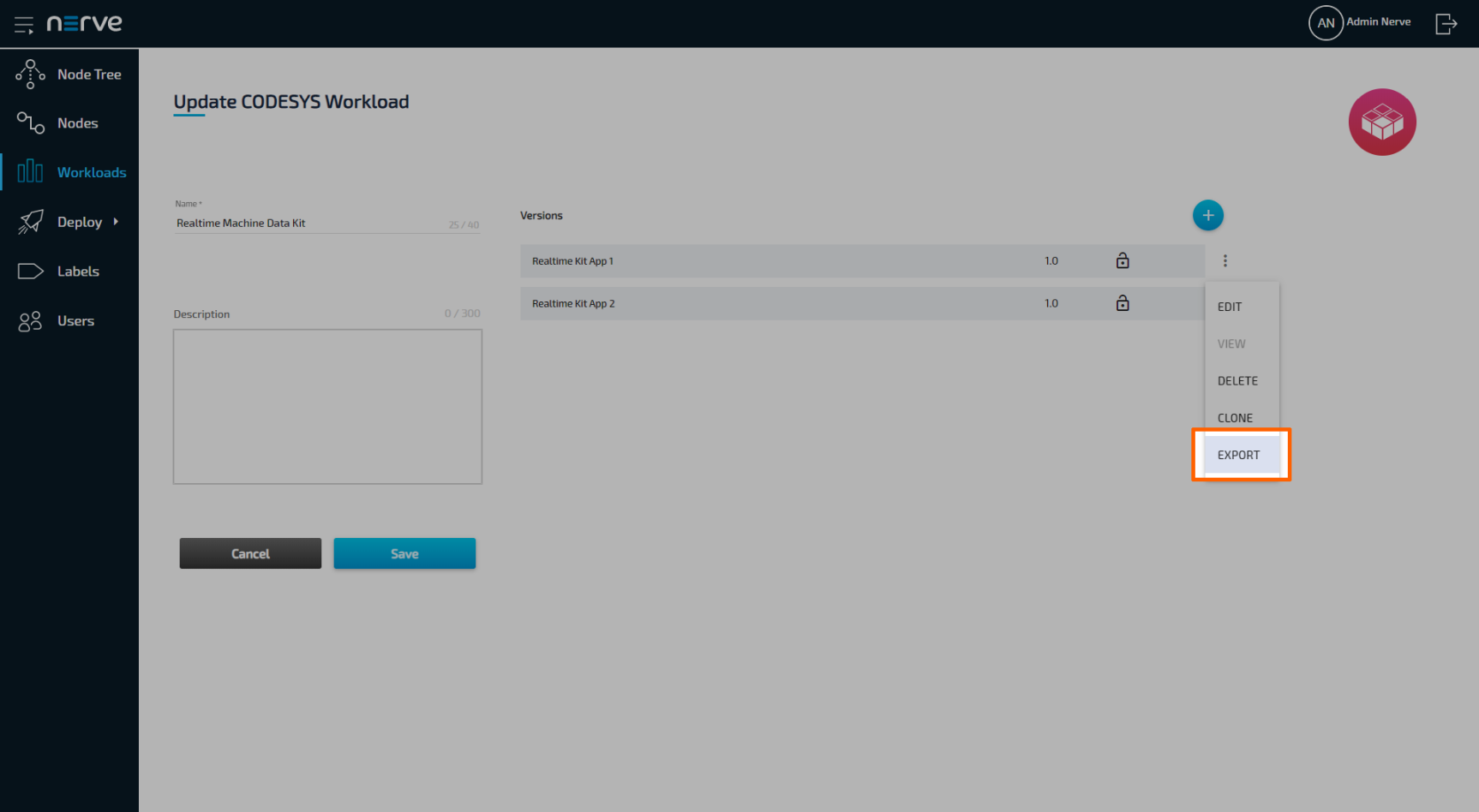Workloads#
In order to work with CODESYS applications, virtual machines or Docker containers on nodes, workloads need to be provisioned in the Management System. Here, provisioning is the creation of a workload and its storage in the workload repository of the Management System so that it can be deployed to nodes. This requires configuration of the workload and files that need to be uploaded to the Management System. After that, the workload can be deployed to nodes.
There are three types of workloads that can be provisioned: CODESYS workloads, Virtual Machine workloads and Docker workloads. The process of provisioning each workload is described in their respective chapters.
Select Workloads in the left-hand menu to find a list of all workloads that have been provisioned.
| Item | Description |
|---|---|
| Search bar (1) | Use the search bar to filter workloads in the list by name. |
| Workload Type (2) | This is a drop-down menu that allows you to filter the list below by workload type. The available options are VM, Docker, CODESYS and All. |
| Show disabled (3) | Disabled workloads are not shown in the list of workloads. Ticking this checkbox shows them again. However, please note that this does not enable the workloads again. |
| Clear search query (4) | Clicking the cross symbol resets the search query to its initial values. |
| Execute search (5) | Clicking here executes the search according to the search criteria you have defined. Pressing Enter also executes a search. |
| Add new workload (6) | Click the plus symbol to provision a new workload. |
| NAME (7) | This is the name of the workload that has been defined in the provisioning process. |
| TYPE (8) | The type of workload is displayed here: codesys, vm or docker. |
| CREATED (9) | This is the date when the workload was provisioned in the format DD/MM/YYYY. |
| Ellipsis menu (10) | Clicking here opens an overlay that gives two options: DELETE and DISABLE. |
| Rows per page (11) | Specify how many workloads are displayed on one page. You can select 5, 10 or 15 workloads per page. |
| Page navigation (12) | Use the arrows to switch between pages. Clicking the number in the middle opens a list of all page numbers. Selecting a number jumps to that page. |
Provisioning a Workload#
Provisioning a workload is the creation of a workload in the workload repository of the Management System. Workloads that have been provisioned are ready to be deployed to nodes.
Select the plus symbol in the upper-right corner of the workloads list to start provisioning a workload. The provisioning process of each workload type is covered separately in the following chapters.
- Provisioning a CODESYS Workload
- Provisioning a Virtual Machine Workload
- Provisioning a Docker Workload
After you have provisioned a workload, it will appear in the list of workloads.
Adding a New Workload Version#
You can add new versions to a provisioned workload to accommodate different use cases.
- Select Workloads from the menu on the left side.
-
Select the workload to which you would like to add a new version.
-
Click the plus symbol in the upper-right.
-
Configure the new workload version.
Note
The fields of the new version will already have information filled in. The system enters the settings of the latest version automatically. If you clicked CLONE next to a workload version, the information filled in will be from that version instead.
-
Click Save to save the new version of the workload.
Editing a Workload#
General information of a workload and configuration settings of each version can be edited starting from the workload list. General information of a workload is valid for all workload versions.
- Select Workloads from the menu on the left side.
-
Select the workload you would like to edit.
-
Select the workload version you would like to edit from the list on the right.
-
Perform your changes to the workload version.
Note
The settings of a workload depend on the workload type. See the version settings for each workload in the provisioning chapters: CODESYS workloads, Virtual Machine workloads and Docker workloads.
-
Click Save to save your changes.
Disabling a Workload#
A workload can be disabled to make it hidden and not selectable. This will hide the workload in the workload list and deployment process but it will not be deleted from the Management System. This also means that the workload cannot be deployed. Workloads that have been deployed to nodes before are not affected.
- Select Workloads from the menu on the left side.
-
Choose the workload you would like to disable.
-
Click the ellipsis menu to the right of the workload.
-
Select DISABLE from the overlay that appeared.
-
Click OK in the new window.
The workload is now disabled and hidden in the list. To show disabled workloads again, tick the checkbox next to Show Disabled in the list of workloads. All disabled workloads are marked by an icon resembling a crossed out eye.
Deleting a Workload#
The instructions below cover the deletion of a workload from the repository in the Management System. Note that deleting a workload from the Management System will not automatically remove the workload from nodes. To remove a workload from a node, undeploy the workload in the Node Tree.
- Select Workloads from the menu on the left side.
-
Choose the workload you would like to delete.
-
Click the ellipsis menu to the right of the workload.
-
Select DELETE in the overlay that appeared.
-
Click OK in the new window to confirm the deletion.
Note
Deleting a workload will automatically delete all versions of the workload as well.
Deleting a Workload Version#
Workload versions that are not needed anymore can easily be deleted in the workload details.
- Select Workloads from the menu on the left side.
-
Select the workload of which you would like to delete a version.
-
Choose the workload version you want to delete.
-
Click the ellipsis menu to the right of the workload version.
-
Select DELETE in the overlay that appeared.
-
Click OK in the new window to confirm the deletion.
Note
Deleting a workload version is not possible if only one version of the workload exists. If you would like to delete the only version anyway, please delete the entire workload.
Exporting a Workload#
In a future update. it will be possible to manually upload a workload to the Management System or the node. To do that, a workload version must be exported. This is already possible in the current version of the system.
- Select Workloads from the menu on the left side.
-
Select the workload of which you would like to export a version.
-
Choose the workload version you want to export.
-
Click the ellipsis menu to the right of the workload version.
-
Select EXPORT in the overlay that appeared.
The download of the exported workload version is started automatically. The workload version is compressed into a TAR file.
Controlling a Workload#
Workloads can be controlled from the node details view in the Node Tree. Please refer to the Node Tree chapter for more information.
